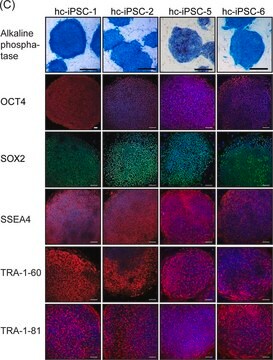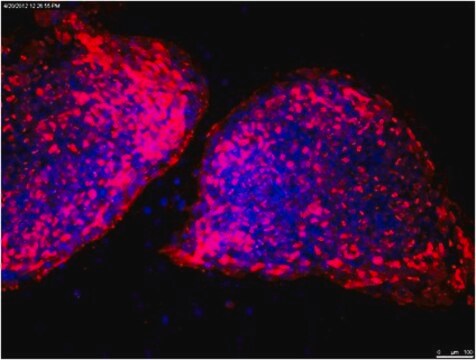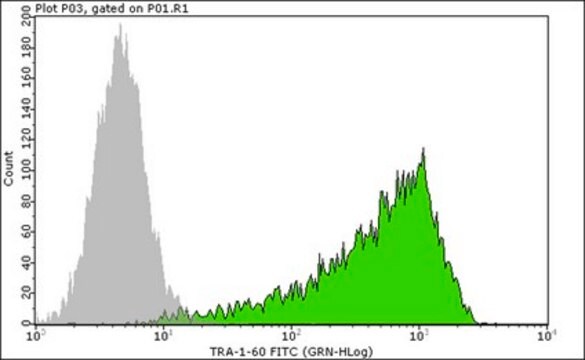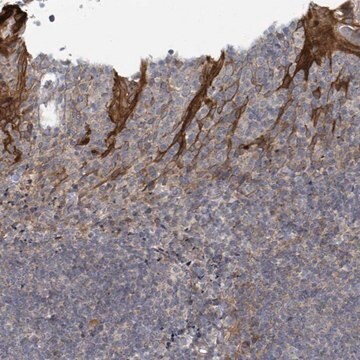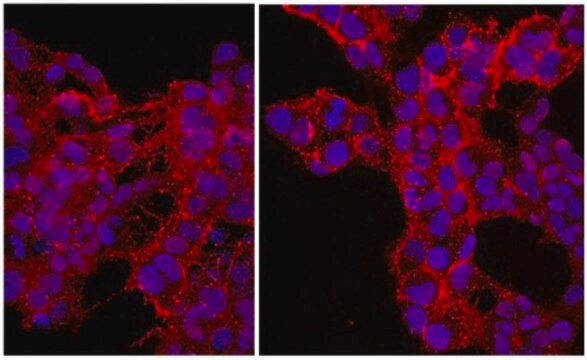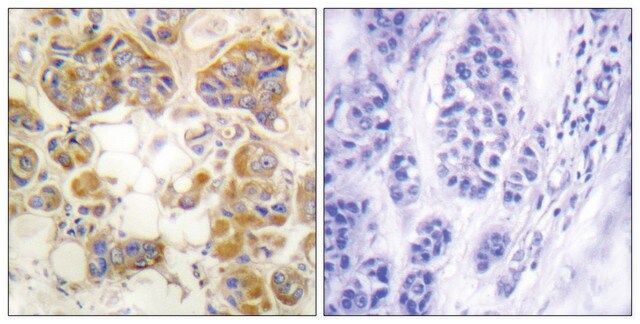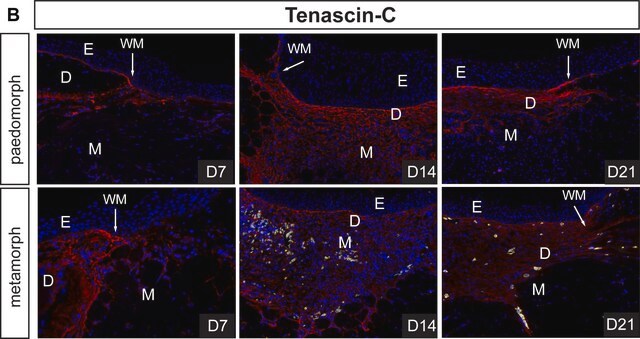MAB4360A4
Anti-TRA-1-60 Antibody, clone TRA-1-60, Alexa Fluor™ 488 Conjugate
clone TRA - 1-60, from mouse, ALEXA FLUOR™ 488
About This Item
Produtos recomendados
fonte biológica
mouse
Nível de qualidade
conjugado
ALEXA FLUOR™ 488
forma do anticorpo
purified antibody
tipo de produto de anticorpo
primary antibodies
clone
TRA - 1-60, monoclonal
reatividade de espécies
human
técnica(s)
immunocytochemistry: suitable
Isotipo
IgM
Condições de expedição
wet ice
modificação pós-traducional do alvo
unmodified
Informações sobre genes
human ... PODXL(5420)
Descrição geral
Especificidade
Imunogênio
Aplicação
Neuroscience
Qualidade
Immunocytochemistry Analysis: A 1:200 dilution of this antibody detected TRA-1-60 in H9 human embryonic stem cells.
forma física
Armazenamento e estabilidade
Nota de análise
H9 human embryonic stem cells
Informações legais
Exoneração de responsabilidade
Não está encontrando o produto certo?
Experimente o nosso Ferramenta de seleção de produtos.
Código de classe de armazenamento
12 - Non Combustible Liquids
Classe de risco de água (WGK)
WGK 2
Ponto de fulgor (°F)
Not applicable
Ponto de fulgor (°C)
Not applicable
Certificados de análise (COA)
Busque Certificados de análise (COA) digitando o Número do Lote do produto. Os números de lote e remessa podem ser encontrados no rótulo de um produto após a palavra “Lot” ou “Batch”.
Já possui este produto?
Encontre a documentação dos produtos que você adquiriu recentemente na biblioteca de documentos.
Nossa equipe de cientistas tem experiência em todas as áreas de pesquisa, incluindo Life Sciences, ciência de materiais, síntese química, cromatografia, química analítica e muitas outras.
Entre em contato com a assistência técnica